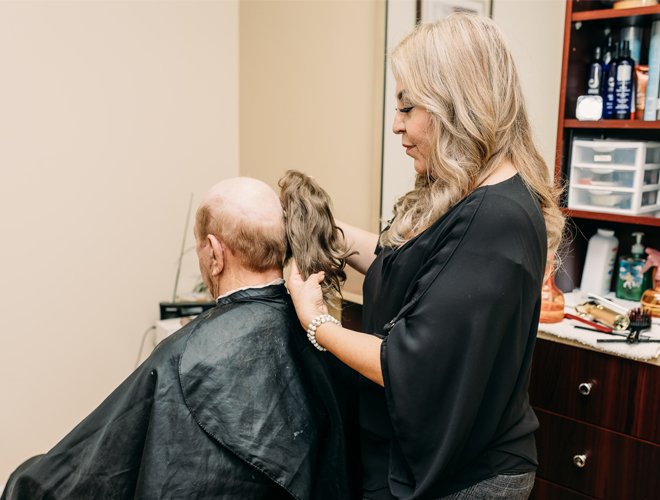
Hair loss, medically known as alopecia, is a common condition that affects both men and women. It can be caused by various factors, including genetics, hormonal changes, medical conditions, medications, and environmental factors.
Hair loss can have a significant impact on self-esteem and quality of life for those affected. While it’s natural to shed some hair daily, excessive hair loss or thinning may require intervention.

This is the most common type of hair loss, characterized by a receding hairline in men and thinning hair in women. It is primarily influenced by genetics and hormones.

This autoimmune condition causes patchy hair loss on the scalp or other parts of the body. It occurs when the immune system mistakenly attacks hair follicles.

This type of hair loss occurs due to a sudden shock to the system, such as extreme stress, illness, or major surgery. It causes hair to shed in large amounts, usually a few months after the triggering event.

This is hair loss caused by constant pulling or tension on the hair, often due to hairstyles like tight braids, ponytails, or extensions.

Minoxidil (Rogaine) is an FDA-approved over-the-counter topical treatment for male and female pattern baldness. It is applied directly to the scalp and can help stimulate hair growth.

Finasteride (Propecia) is a prescription medication for male pattern baldness. It works by inhibiting the hormone dihydrotestosterone (DHT), which is responsible for shrinking hair follicles.

For alopecia areata, corticosteroid injections can help suppress the immune response and stimulate hair regrowth in affected areas.

This surgical procedure involves transplanting hair follicles from a donor area (usually the back or sides of the scalp) to the balding or thinning areas. It can provide permanent and natural-looking results.

In this procedure, the bald scalp is surgically removed, and the remaining hair-bearing scalp is stretched to cover the area. It’s typically used for larger bald patches.

A balanced diet rich in vitamins, minerals, and proteins is essential for maintaining healthy hair growth.

Chronic stress can contribute to hair loss. Practices like yoga, meditation, or therapy can help manage stress levels.

Avoiding harsh hair treatments, excessive heat styling, and tight hairstyles can prevent further damage to fragile hair.

This involves injecting the patient’s own platelet-rich plasma into the scalp to stimulate hair follicle growth.

Low-level laser therapy (LLLT) devices are available for at-home or in-office use to stimulate hair growth.
Before pursuing any hair loss treatment, it’s essential to consult with a healthcare professional or a dermatologist. They can help diagnose the underlying cause of hair loss and recommend the most appropriate treatment plan based on individual needs and circumstances.
While hair loss can be distressing, there are numerous solutions available, ranging from medical treatments to lifestyle changes and surgical interventions. With the right approach and guidance from healthcare professionals, individuals experiencing hair loss can explore options to restore their confidence and achieve healthy hair growth.
Available by phone, email and on premises, by appointment only.